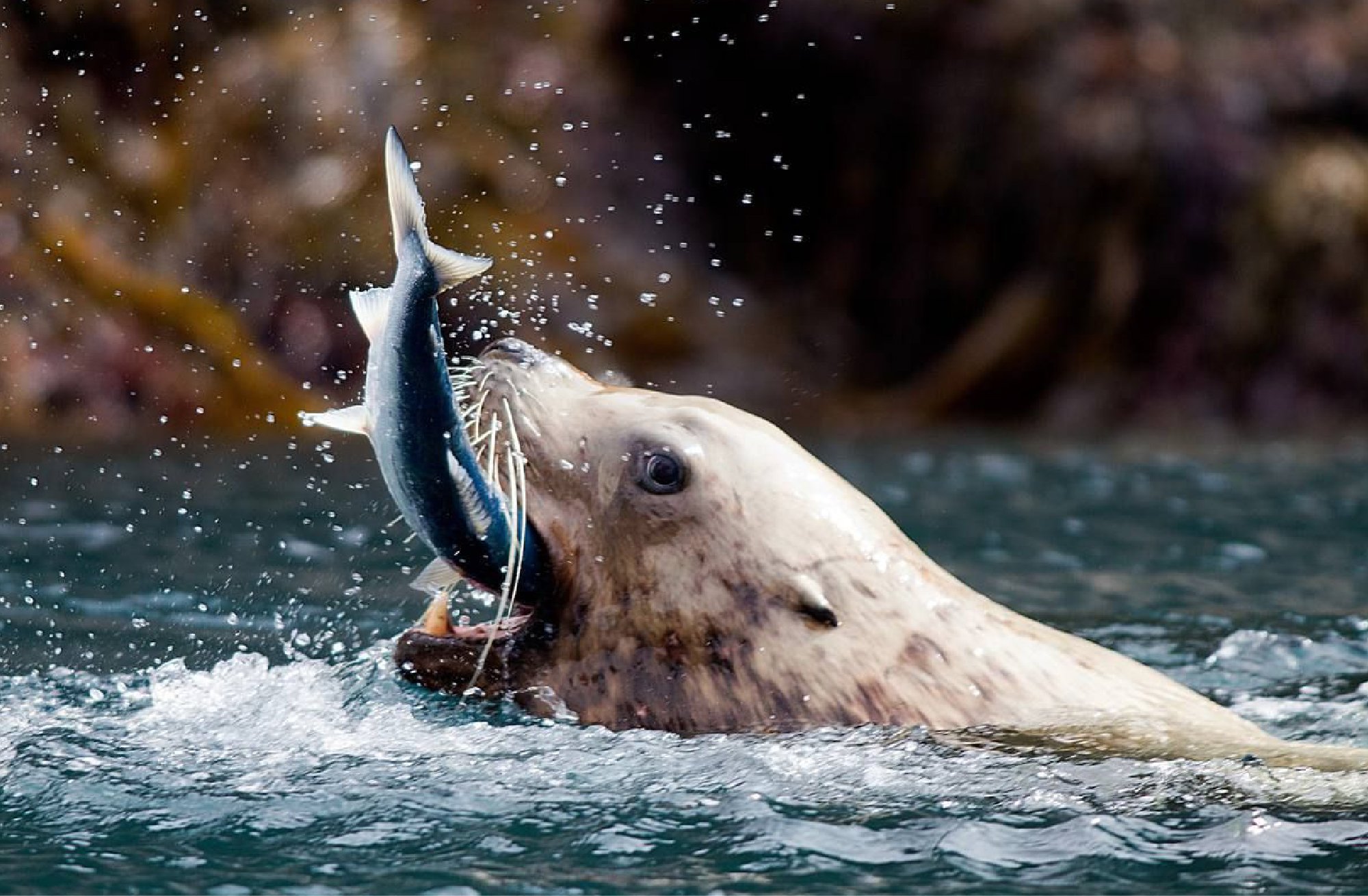
BC’S COAST IS DIVERSE AND PRODUCTIVE.
STRATEGIES TO PROTECT IT SHOULD BE, TOO.
SEALS AND SEA LIONS ARE HAVING A PROFOUND EFFECT ON MANY OF BC’S COASTAL SALMON POPULATIONS
Over the past 50 years some key BC Chinook stocks have been in decline. Based on a large body of research, A significant source of this decline is understood to be the unchecked growth of seal and sea lion populations (known collectively as pinnipeds) particularly in the Salish Sea. Whereas traditional Fist Nations and non-indigenous harvest once kept the pinniped population in balance, a ban on hunting pinnipeds enacted in the 1970’s has allowed their populations to increase ten-fold. The combination of the population growth and increased movement into rivers and estuaries has resulted in a massive increase in the numbers of salmon consumed by pinnipeds along the Pacific Coast. These include salmon at all life stages ranging from smolts to spawning adults.

PINNIPEDS
(SEALS AND SEA LIONS) IN GEORGIA STRAIT HAVE RISEN FROM:
THE INCREASE IN PINNIPEDS IS UNSUSTAINABLE
The actions of humans have resulted in an increase of pinnipeds that is unsustainable and threatens wild salmon recovery and salmon fisheries. Due to a ban on the traditional hunting of seals and sea lions in our waters, their populations have proliferated since the 1970’s. Today it is estimated that there are more than 70,000 pinnipeds in Georgia Strait alone, a ten-fold increase. Due to their artificially inflated numbers, a direct result of their protected status, seals and sea lions have increasingly inhabited estuaries and rivers and moved further upstream to lakes and tributaries, where they consume vast numbers of young salmon smolts as they move from the freshwater to the ocean and returning adults as they migrate upriver to spawn.
IT IS ESTIMATED THAT ALMOST HALF OF ALL CHINOOK AND COHO JUVENILE SALMON OR SMOLTS LEAVING RIVERS IN GEORGIA STRAIT ARE EATEN BY SEALS.
(SALISH SEA MARINE SURVIVAL PROJECT – PACIFIC SALMON FOUNDATION 2020)
PREDATORS TODAY CONSUME SIX TIMES MORE CHINOOK THAN BEFORE.
Marine biologists have identified seals and sea lions as the #1 predators of Chinook and Coho Salmon in BC waters, consuming more Chinook than Killer Whales and commercial and recreational fisheries combined. In 1975, predators including seals and sea lions consumed 5 million Chinook. Today, they eat more than 31 million Chinook every year. In the same timeframe, human harvesting of Chinook has decreased, from 3.6 million to 2.1 million.

A SOLUTION INCLUDES A RETURN TO MANAGEMENT AND HARVEST PRACTICES THAT WILL RE-ESTABLISH A SUSTAINABLE PINNIPED POPULATION
The increase in the seal population represents a direct threat to the long-term survival of salmon stocks, First Nations fisheries and public fisheries. Only effective, sustainability-based management of the pinniped population will make a significant impact on the survival and future productivity of salmon stocks. Reasoned and humane management through harvest of the pinniped population, which follow successful and sustainable strategies of the past, can help ensure that BC’s Chinook, Coho, Chum, and other salmon populations are able to recover and return to a viable and healthy state for a long time to come.
SOUTHERn RESIDENt KILLER WHALES AND PINNIPEDS ARCHIVE
An archive of relevant and important documents about Southern Resident Killer Whales (SRKW) and Pinnipeds.
Dr. carl walters: “role of marine mammals in bC fishery collapses”
Listen to Emeritus Professor Carl Walters discuss the role of marine mammal predation in recent B.C. fishery collapses.




